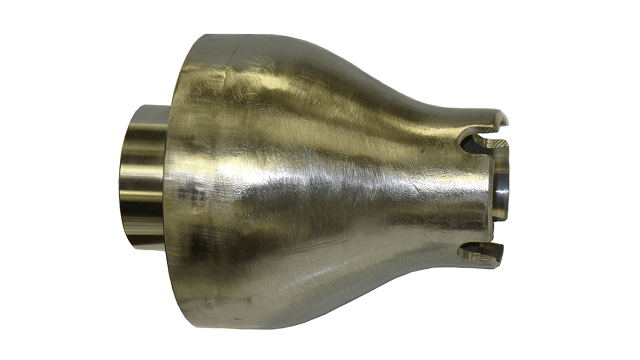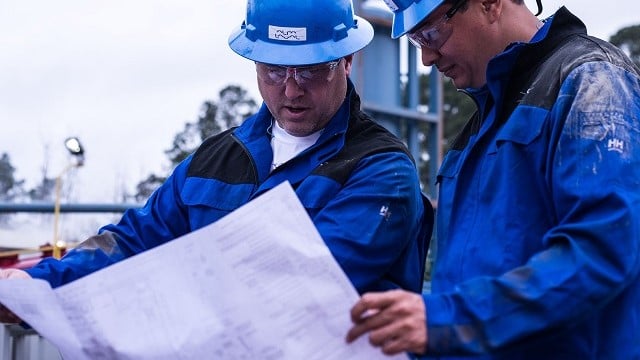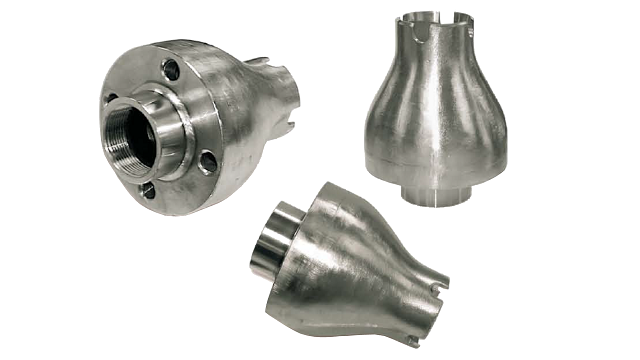Vortex Snub Radial Eductor
The Alfa Laval Vortex Snub Radial Eductor is a high performance tank mixing eductor specially designed for corrosive liquids. It has been optimized for challenging tank mixing jobs, for example when using irregular shaped tanks, and can handle various fluid shearing requirements.
Cost-effective solution for in-tank fluid shearing
- Simple, robust design – no moving parts
- No maintenance
- Compact design
- Dynamically shears fluid and enhances reactions
How it works
Fluid is pumped into the Alfa Laval Vortex Snub Radial Eductor inlet where pressure builds at its nozzle. The fluid velocity increases at the nozzle resulting in a pressure drop and strong vacuum that pulls surrounding fluid into the eductor body through its four peripheral suction ports.
The converging fluid streams are dynamically sheared by the nozzle and discharged into the tank as a high-energy plume.

Learn more
You can read more about the efficiency, practicality and technical details of the Alfa Laval Vortex Snub Radial Eductor by downloading the product leaflet.

Ask the expert
If you are looking to improve fluid shearing of corrosive fluids in a simple yet effective way, or have any questions about the Alfa Laval Vortex Snub Radial Eductor, contact us to discuss the various options.

CAD portal
Download the product models in Neutral or Native CAD file formats. It is also possible to download 3D PDF files.
near Newsletter
To keep you updated on important sustainability issues and opportunities in your industry and processes.

